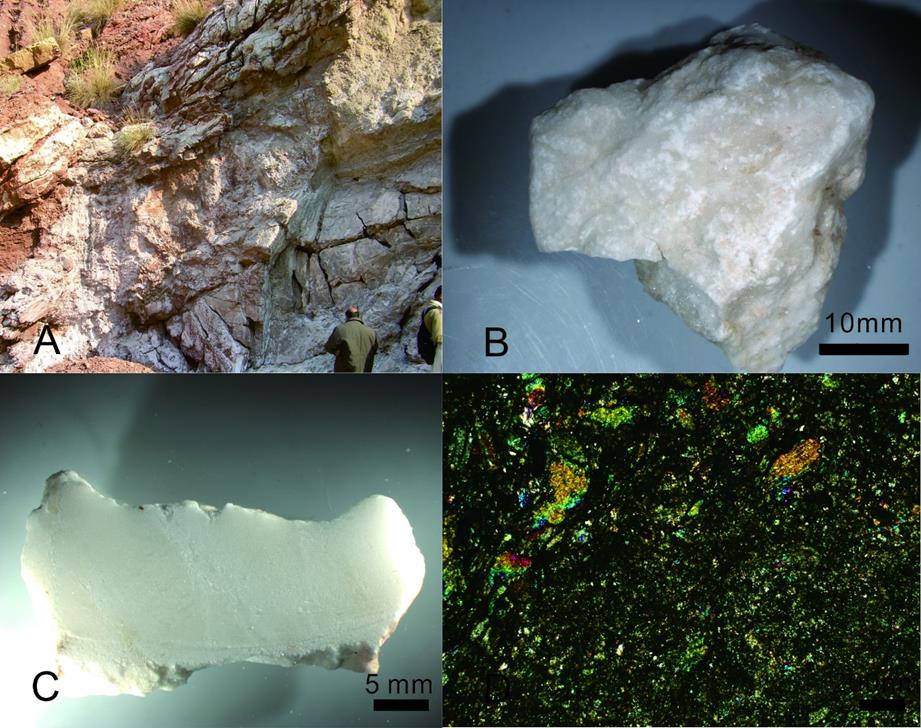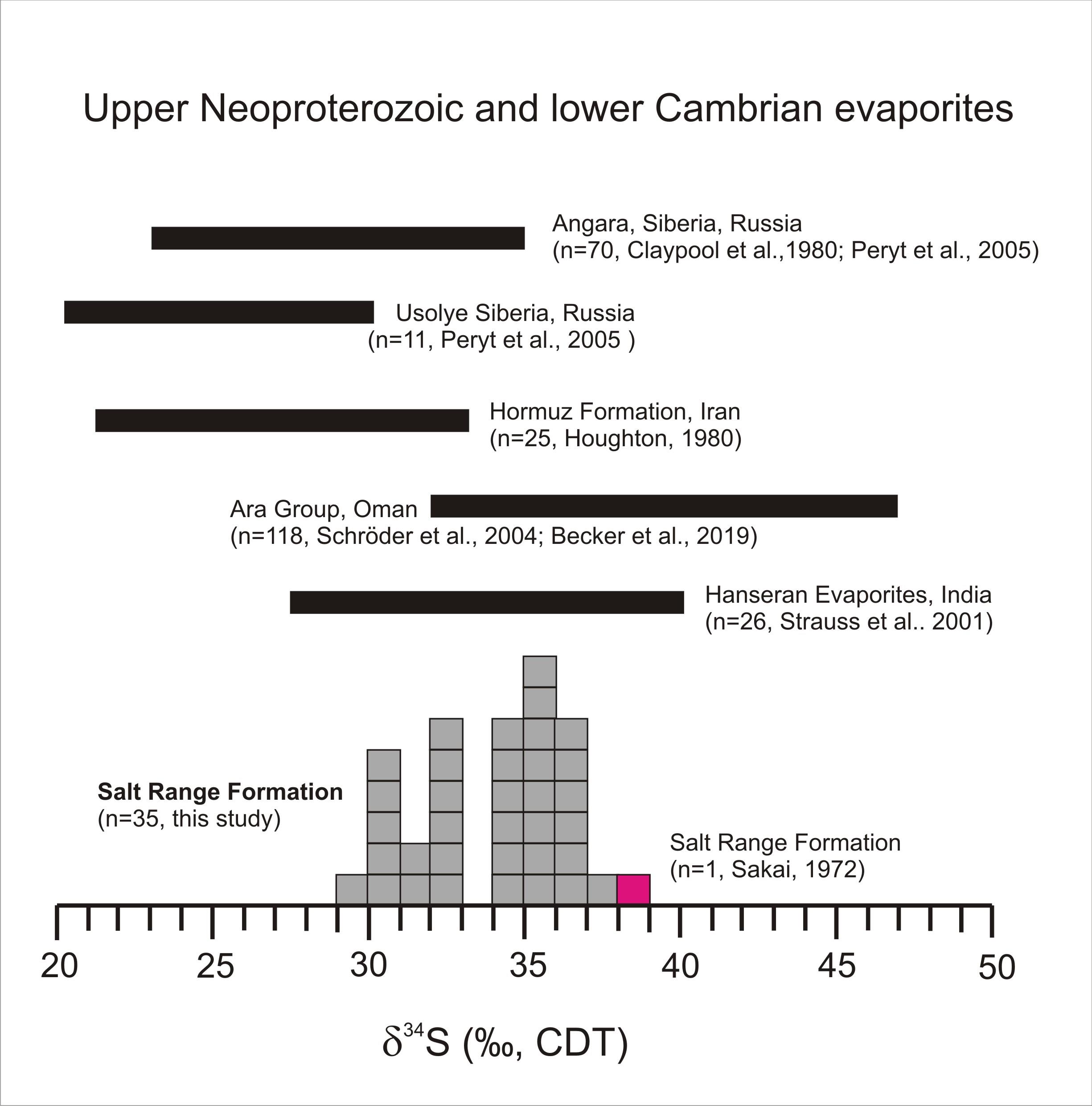The late Neoproterozoic to the Early Cambrian is a key turning point in the evolution of the earth's environment and life. Great changes have taken place in the whole biosphere, atmosphere and hydrosphere. After the Neoproterozoic Glaciation, the sulfur isotope of seawater sulfate showed the largest positive anomaly in geological history. The values of δ34S fluctuates between 30‰ and 35‰, and sometimes even reach 45‰. This phenomenon was first discovered in Yudomski Formation in Siberia, which is called Yudomski Event.
During this period, the sulfur isotope of sulfate in seawater changed dramatically, and its process was also recorded by sulfate deposition, the huge evaporite belt extended from Oman in the Middle East to Iran, Pakistan, northern India, and even to Sichuan Basin.
Recently, MENG Fanwei, Associate Professor of Nanjing Institute of Geology and Paleontology, Chinese Academy of Sciences (NIGPAS), cooperated with Professor Krzysztof Bukowski of AGH University of technology in Poland and Professor Naveed Ahsan of Punjab University in Pakistan to continuously analyze the gypsum deposition of Salt Range Formation from late Neoproterozoic to Early Cambrian in Salt Range area in northern Pakistan of India plate, The abnormal event was first found in the strata in northern Pakistan, which is also the first systematic study of the event in Pakistan. The research results were recently published in the European academic journal Geological Quarterly.
It is found that the sulfur isotope of gypsum in Salt Range Formation ranges from 35‰ to 30‰ from Late Proterozoic to Early Cambrian, and gradually decreases to about 30‰ with the formation from bottom to top. The same sulfur isotope anomaly has been found in Tarim Basin, northwestern China, which supports this previous speculation about the affinity between the Indian plate and the Tarim Basin.
The study of sulfur isotopes of evaporites in Salt Range area in northern Pakistan of the Indian plate not only reveals that the global consistency of the Yudomski event, but also for the correlation of evaporite stratigraphy within the globe and the recovery of world paleogeography, as well as the sources of hydrocarbon sources formed at the same time.
This study is also a report of the results of the investigation of salt range and other areas in northern Pakistan by NIGPAS from February 21 to March 6, 2018.This work was financially supported by the National Natural Science Foundation of China, the Basic Frontier Scientific Research Program of the Chinese Academy of Sciences, AGH University of Science and Technology and by the Bureau of International Co-operation, Chinese Academy of Sciences.
Reference: Fanwei Meng, Zhili Zhang, Krzysztof Bukowski*, Qingong Zhuo, Naveed Ahsan, Saif Ur-Rehman and Pei Ni, 2021. A strongly positive sulphur isotopic shift in late Ediacaran-early Cambrian seawater: evidence from evaporites in the Salt Range Formation, north ern Pakistan. Geological Quarterly, 65: 30. http://dx.doi.org/10.7306/gq.1598.

Fig, 1 Gypsum in Salt Range Formation, northern Pakistan

Fig. 2 The sulfur isotope data of gypsum in Salt Range Formation
Download:
